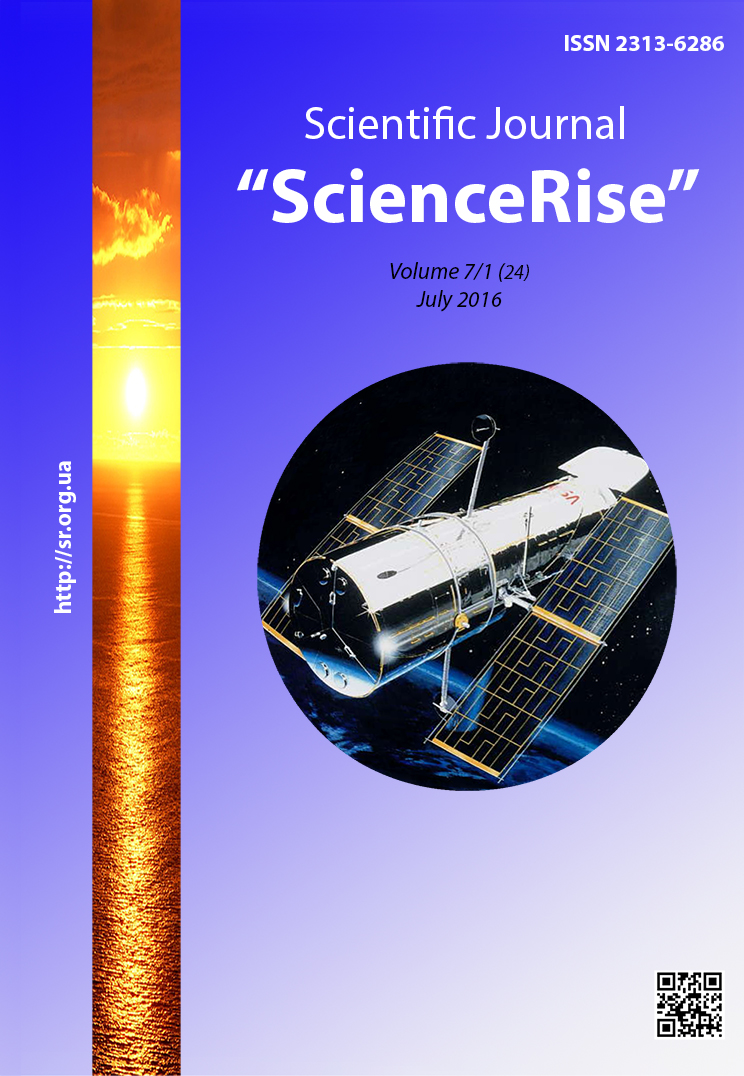Digital technologies and reforging the iron men
DOI:
https://doi.org/10.15587/2313-8416.2016.69141Keywords:
Silicon Race, SiRace, digital age, cyborg, myth of the races, Hesiod, digitalizationAbstract
Digital technologies not only to transform the social and cultural reality; they are making changes in the human nature. Therefore, it makes sense to speak about Silicon Race (SiRace). Iron men descend from the world history scene. This process is irreversible, but realizing in emerging with the prospects and the risks that accompany them, we can direct the efforts to ensure that reforging the iron men will be successful
References
Fukuyama, F. (2002). Our posthuman future: Consequences of the biotechnology revolution. New York, NY: Farrar, Straus and Giroux, 256.
Kurzweil, R. (2004). Human body version 2.0. In The scientific conquest of death: Essay on infinite lifespans. Buenos Aires: LibrosEnRed, 93–106.
Palese, E. (2012). Robots and cyborgs: to be or to have a body? Poiesis & Praxis, 8 (4), 191–196. doi: 10.1007/s10202-012-0107-4
Bamford, S. (2012). A framework for approaches to transfer of a mind's substrate. International Journal of Machine Consciousness, 4 (1), 23–34. doi: 10.1142/s1793843012400021
Floridi, L. (2012). The fourth revolution. The Philosophers’ Magazine, 57, 96–101. doi: 10.5840/tpm20125756
Clark, A. (2003). Natural-born cyborgs: Minds, technologies, and the future of human intelligence. New York, NY: Oxford University Press, 229.
Spengler, O. (1993). Zakat Yevropy [The decline of the West] Vol. 1. Moscow: Mysl, 663.
Halapsis, A. (2016). Historical process and heavenly management: Hesiod’s message. ScienceRise, 5 (1 (22)), 63. doi: 10.15587/2313-8416.2016.69142
Halapsis, A. (2015). Urbis et orbis: Non-Euclidean space of history. Evropský filozofický a historický diskurz, 1 (2), 37–42.
Houtman, D., Aupers, S. (2010). Religions of modernity: Relocating the sacred to the self and the digital. Religions of modernity: Relocating the sacred to the self and the digital. Leiden: Brill, 1–29.
Zandbergen, D. (2010). Silicon Valley New Age: The co-constitution of the digital and the sacred. Religions of modernity: relocating the sacred to the self and the digital. Leiden: Brill, 161–185.
Halapsis, A. (2016). Number and reality: sources of scientific knowledge. ScienceRise, 6 (1 (23)), 59. doi: 10.15587/2313-8416.2016.71546
Steinhart, E. (1998). Digital metaphysics. The digital phoenix: How computers are changing philosophy. Oxford: Blackwell, 117–134.
Barassi, V. (2015). Activism on the web: Everyday struggles against digital capitalism. New York, NY; London: Routledge, 180.
Mossberger, K., Tolbert, C. J., & McNeal, R. S. (2008). Digital citizenship: The internet, society, and participation. Cambridge, MA: MIT Press, 221.
Wilhelm, A. G. (2004). Digital nation: Toward an inclusive information society. Cambridge, MA: MIT Press, 161.
Halapsis, A. (2014). Gosudarstvo i budushchee [A state and future]. Perspectives, 61 (3), 81–87.
Waite, C. (2013). The digital evolution of an American identity. New York, NY; London: Routledge, 129.
Franciscus. Message of His Holiness Pope Francis for the 48th World Communications Day (2014). Available at: http://www.news.va/en/news/communication-at-the-service-of-an-authentic-cultu
Sass, S. L. (2011). The substance of civilization materials and human history from the Stone age to the Age of silicon. New York, NY: Arcade, 328.
Fairclough, H. R. (Ed.) Virgil. (1938). Eclogues. Georgics. Aeneid: Books 1-6. Vol. I. Cambridge, MA: Harvard University Press, 593.
Miller, F. J. (Ed.) (1971). Ovid. Metamorphoses. Vol. I: Books 1-8. Cambridge, MA: Harvard University Press, 467.
Most, G. W. (Ed.) (2006). Hesiod. Theogony. Works and Days. Testimonia. Cambridge, MA; London: Harvard University Press, 308.
Hesiod. Polnoe sobranie tekstov (2001). Moscow: Labirint, 256.
Yudell, M., Roberts, D., DeSalle, R., Tishkoff, S. (2016). Taking race out of human genetics. Science, 351 (6273), 564–565. doi: 10.1126/science.aac4951
Yudell, M., Roberts, D., DeSalle, R., Tishkoff, S. (2016). Taking race out of human genetics. Science, 351 (6273), 564–565. doi: 10.1126/science.aac4951
McNeill, W. H. (1991). The rise of the West: A history of the human community; with a retrospective essay. Chicago, IL: University of Chicago Press, 860.
Osborne, R. (2008). Civilization: A new history of the Western world. New York, NY: Pegasus, 544.
Here’s how you can watch Elon Musk live at Code Conference (2016). Available at: http://www.recode.net/2016/6/2/11835550/watch-elon-musk-code-conference
Prodhan, G. (2016). Europe’s robots to become 'electronic persons' under draft plan. Available at: http://www.reuters.com/article/us-europe-robotics-lawmaking-idUSKCN0Z72AY
Downloads
Published
Issue
Section
License
Copyright (c) 2016 Алексей Владиславович Халапсис

This work is licensed under a Creative Commons Attribution 4.0 International License.
Our journal abides by the Creative Commons CC BY copyright rights and permissions for open access journals.
Authors, who are published in this journal, agree to the following conditions:
1. The authors reserve the right to authorship of the work and pass the first publication right of this work to the journal under the terms of a Creative Commons CC BY, which allows others to freely distribute the published research with the obligatory reference to the authors of the original work and the first publication of the work in this journal.
2. The authors have the right to conclude separate supplement agreements that relate to non-exclusive work distribution in the form in which it has been published by the journal (for example, to upload the work to the online storage of the journal or publish it as part of a monograph), provided that the reference to the first publication of the work in this journal is included.

